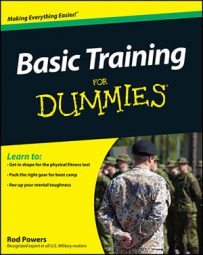Ranks of the military branches
Different branches have different military ranks. Here’s a list to help you prepare, whether you’re heading off to basic training for the Army, Air Force, Navy, Coast Guard, or Marine Corps.
Enlisted:
-
Army: E-1 Private, E-2 Private, E-3 Private First Class, E-4 Corporal/Specialist, E-5 Sergeant, E-6 Staff Sergeant, E-7 Sergeant First Class, E-8 Master Sergeant/First Sergeant, E-9 Sergeant Major
-
Air Force: E-1 Airman Basic, E-2 Airman, E-3 Airman First Class, E-4 Senior Airman, E-5 Staff Sergeant, E-6 Technical Sergeant, E-7 Master Sergeant, E-8 Senior Master Sergeant E-9 Chief Master Sergeant (Note: Air Force First Sergeants can be in the pay grades of E-7, E-8, or E-9)
-
Navy/Coast Guard: E-1 Seaman Recruit, E-2 Seaman Apprentice, E-3 Seaman, E-4 Petty Officer Third Class, E-5 Petty Officer Second Class, E-6 Petty Officer First Class, E-7 Chief Petty Officer, E-8 Senior Chief Petty Officer, E-9 Master Chief Petty Officer
-
Marine Corps: E-1 Private, E-2 Private First Class, E-3 Lance Corporal, E-4 Corporal, E-5 Sergeant, E-6 Staff Sergeant, E-7 Gunnery Sergeant, E-8 Master Sergeant/First Sergeant, E-9 Master Gunnery Sergeant/Sergeant Major
Warrant Officers (all branches except the Air Force):
W-1 Warrant Officer, W-2 Chief Warrant Officer Two, W-3 Chief Warrant Officer Three, W-4 Chief Warrant Officer Four, W-5 Master Chief Warrant Officer Five
Commissioned Officers:
-
Army/Air Force/Marine Corps: O-1 Second Lieutenant, O-2 First Lieutenant, O-3 Captain, O-4 Major, O-5 Lieutenant Colonel, O-6 Colonel, O-7 Brigadier General, O-8 Major General, O-9 Lieutenant General, O-10 General
-
Navy/Coast Guard: O-1 Ensign, O-2 Lieutenant (Junior Grade), O-3 Lieutenant, O-4 Lieutenant Commander, O-5 Commander, O-6 Captain, O-7 Rear Admiral (lower half), O-8 Rear Admiral (Upper half), O-9 Vice Admiral, O-10 Admiral
The chain of command
In the military, you need to know who is in charge — in essence, the military chain of command. You should always go directly to your superior (and not your superior’s superior!). This handy guide lets you know who reports to whom.
| Branch | Chain of Command |
|---|---|
| Army | Recruit, Drill Sergeant, Platoon Leader, Company Commander, Battalion Commander, Brigade Commander, Division Commander, Corps Commander, Army Chief of Staff, Secretary of the Army, Secretary of Defense, Commander-in-Chief (President) |
| Air Force | Recruit, Training Instructor, Flight Chief, Squadron Commander, Group Commander, Wing Commander, AETC Commander, Air Force Chief of Staff, Secretary of the Air Force, Secretary of Defense, Commander-in-Chief (President) |
| Navy | Recruit, Company Commander, Division Leading Chief Petty Officer, Division Officer, Military Training Assistant, Military Training Officer, Executive Officer, Commanding Officer, Chief of Naval Education and Training, Chief of Naval Operations, Secretary of the Navy, Secretary of Defense, Commander-in-Chief (President) |
| Marine Corps | Recruit, Drill Instructor, Company Commander, Battalion Commander, Regimental Commander, Division Commander, Chief of Naval Education and Training, Commandant of the Marine Corps, Secretary of the Navy, Secretary of Defense, Commander-in-Chief (President) |
| Coast Guard | Recruit, Company Commander, Lead Company Commander, Section Commander, Battalion Commander, Battalion Officer, Regimental Officer, Training Officer, Executive Officer, Commanding Officer, Coast Guard Commandant, Secretary of Homeland Security, Commander-in-Chief (President) |
Rules of the sentry
When you’re sentry in the Army, Air Force, Navy, Coast Guard, or Marine Corps, it’s important to take your responsibility seriously. Follow these 11 rules, no matter which military branch you’re in, and you’ll never go wrong!
-
Take charge of this post and all government property in view.
-
Walk my post in a military manner, keeping always on the alert, and observing everything that takes place within sight or hearing.
-
Report all violations of orders I am instructed to enforce.
-
Repeat all calls from posts more distant from the guard house than my own.
-
Quit my post only when properly relieved.
-
Receive, obey and pass on to the sentry who relieves me, all orders from the Commanding Officer, Command Duty Officer, Officer of the Deck, and Officers and Petty Officers of the Watch only.
-
Talk to no one except in the line of duty.
-
Give the alarm in case of fire or disorder.
-
Call the Officer of the Deck in any case not covered by instructions.
-
Salute all officers and all colors and standards not cased.
-
Be especially watchful at night, and, during the time for challenging, to challenge all persons on or near my post and to allow no one to pass without proper authority.
Learn military time
The military is all about being on time. Of course, when you arrive at basic training, you need to learn to tell time in a whole new way — the military way! Master this list, and you’ll have no reason to ever be late!
| Time | Military Time Equivalent |
|---|---|
| Midnight (12 a.m.) | 0000 hrs |
| 1 a.m. | 0100 hrs |
| 2 a.m. | 0200 hrs |
| 3 a.m. | 0300 hrs |
| 4 a.m. | 0400 hrs |
| 5 a.m. | 0500 hrs |
| 6 a.m. | 0600 hrs |
| 7 a.m. | 0700 hrs |
| 8 a.m. | 0800 hrs |
| 9 a.m. | 0900 hrs |
| 10 a.m. | 1000 hrs |
| 11 a.m. | 1100 hrs |
| 12 p.m. | 1200 hrs |
| 1 p.m. | 1300 hrs |
| 2 p.m. | 1400 hrs |
| 3 p.m. | 1500 hrs |
| 4 p.m. | 1600 hrs |
| 5 p.m. | 1700 hrs |
| 6 p.m. | 1800 hrs |
| 7 p.m. | 1900 hrs |
| 8 p.m. | 2000 hrs |
| 9 p.m. | 2100 hrs |
| 10 p.m. | 2200 hrs |
| 11 p.m. | 2300 hrs |

